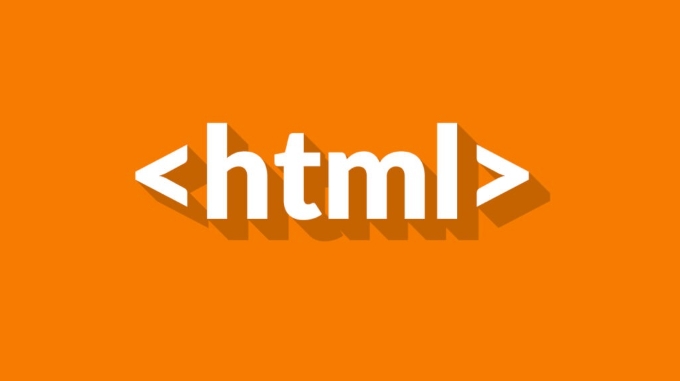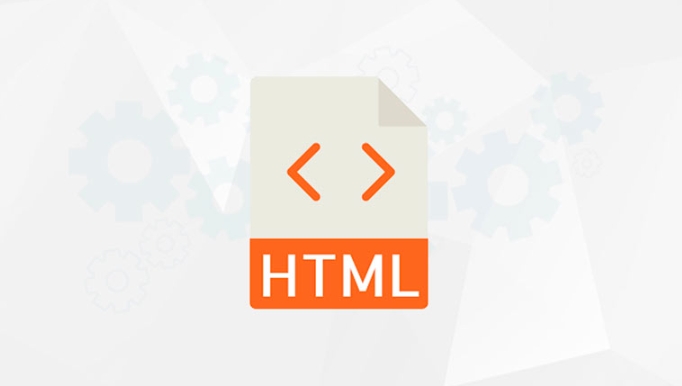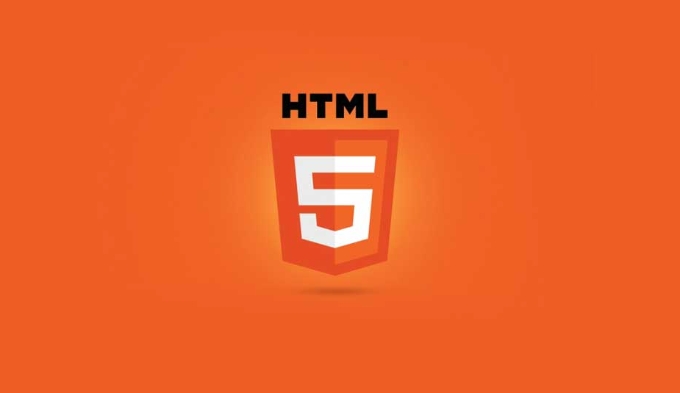 Web Front-end
Web Front-end
 HTML Tutorial
HTML Tutorial
 Defining headers and footers for sections and the document with HTML.
Defining headers and footers for sections and the document with HTML.
Defining headers and footers for sections and the document with HTML.
Jul 02, 2025 pm 02:54 PMUse HTML5's <header> and <footer> tags to effectively define the page structure and improve user experience and SEO effects. 1. Document level <header> and <footer> are used for the top and bottom areas of the entire website; 2. Section level <header> and <footer> are used for the title and supplementary information of each block; 3. Each <section> or <article> should contain only one <header> and one <footer> to avoid semantic confusion; 4. Document level <footer> should be placed at the end of the and not nested in any <section>; 5. Different levels of <header> and <footer> can be styled to enhance readability and maintenance through the CSS selector.

In web development, defining the header and footer of the page not only helps to have clear structure, but also improves the user experience. HTML5 introduces semantic tags, allowing developers to divide page areas more intuitively. Here are some practical practices to help you better define the headers and footers of the document and its various sections.

Package content with <header></header> and <footer></footer>
HTML5 provides special tags to represent headers and footers, which can appear throughout the document or be nested inside a <section></section> or <article></article> .

- Document-level header and footer : Usually used in the top navigation bar and bottom information area of ??a website.
- section-level header and footer : Title and supplementary information for each independent block.
<header>
<h1>My website</h1>
<nav>...</nav>
</header>
<section>
<header>
<h2>About me</h2>
</header>
<p>Here is an introduction about me. </p>
<footer>
<p>Updated in 2024</p>
</footer>
</section>This approach is not only clear in structure, but also helps SEO and screen readers to identify content levels.
Reasonable nesting to avoid duplication
Sometimes you will see some people nesting multiple <header> s together, but this is not recommended. A <section> or <article> generally only requires one <header> and one <footer> .

Common misunderstandings:
- Putting multiple headers in the same section causes semantic confusion.
- Put the overall footer of the website in a certain section to affect the structural logic.
Correct way to do it:
- Each section contains only one header and footer.
- Document level footer should be placed at the end of the body, but not wrapped in any section.
Better style control with CSS
Although HTML tags provide structural distinction, visual performance still needs to be achieved through CSS. You can precisely control headers and footers at different levels through selectors.
for example:
header {
background: #333;
color: white;
padding: 1em;
}
section > header {
font-size: 1.5em;
border-bottom: 1px solid #ccc;
}This allows the global header and the header in the section to have different styles, which enhances readability.
Basically that's it. Rational use of <header></header> and <footer></footer> can make your HTML structure clearer, more convenient to maintain, and easier to be recognized by search engines and auxiliary tools.
The above is the detailed content of Defining headers and footers for sections and the document with HTML.. For more information, please follow other related articles on the PHP Chinese website!

Hot AI Tools

Undress AI Tool
Undress images for free

Undresser.AI Undress
AI-powered app for creating realistic nude photos

AI Clothes Remover
Online AI tool for removing clothes from photos.

Clothoff.io
AI clothes remover

Video Face Swap
Swap faces in any video effortlessly with our completely free AI face swap tool!

Hot Article

Hot Tools

Notepad++7.3.1
Easy-to-use and free code editor

SublimeText3 Chinese version
Chinese version, very easy to use

Zend Studio 13.0.1
Powerful PHP integrated development environment

Dreamweaver CS6
Visual web development tools

SublimeText3 Mac version
God-level code editing software (SublimeText3)
 Applying Semantic Structure with article, section, and aside in HTML
Jul 05, 2025 am 02:03 AM
Applying Semantic Structure with article, section, and aside in HTML
Jul 05, 2025 am 02:03 AM
The rational use of semantic tags in HTML can improve page structure clarity, accessibility and SEO effects. 1. Used for independent content blocks, such as blog posts or comments, it must be self-contained; 2. Used for classification related content, usually including titles, and is suitable for different modules of the page; 3. Used for auxiliary information related to the main content but not core, such as sidebar recommendations or author profiles. In actual development, labels should be combined and other, avoid excessive nesting, keep the structure simple, and verify the rationality of the structure through developer tools.
 How to group options within a select dropdown using html?
Jul 04, 2025 am 03:16 AM
How to group options within a select dropdown using html?
Jul 04, 2025 am 03:16 AM
Use tags in HTML to group options in the drop-down menu. The specific method is to wrap a group of elements and define the group name through the label attribute, such as: 1. Contains options such as apples, bananas, oranges, etc.; 2. Contains options such as carrots, broccoli, etc.; 3. Each is an independent group, and the options within the group are automatically indented. Notes include: ① No nesting is supported; ② The entire group can be disabled through the disabled attribute; ③ The style is restricted and needs to be beautified in combination with CSS or third-party libraries; plug-ins such as Select2 can be used to enhance functions.
 Implementing Clickable Buttons Using the HTML button Element
Jul 07, 2025 am 02:31 AM
Implementing Clickable Buttons Using the HTML button Element
Jul 07, 2025 am 02:31 AM
To use HTML button elements to achieve clickable buttons, you must first master its basic usage and common precautions. 1. Create buttons with tags and define behaviors through type attributes (such as button, submit, reset), which is submitted by default; 2. Add interactive functions through JavaScript, which can be written inline or bind event listeners through ID to improve maintenance; 3. Use CSS to customize styles, including background color, border, rounded corners and hover/active status effects to enhance user experience; 4. Pay attention to common problems: make sure that the disabled attribute is not enabled, JS events are correctly bound, layout occlusion, and use the help of developer tools to troubleshoot exceptions. Master this
 Configuring Document Metadata Within the HTML head Element
Jul 09, 2025 am 02:30 AM
Configuring Document Metadata Within the HTML head Element
Jul 09, 2025 am 02:30 AM
Metadata in HTMLhead is crucial for SEO, social sharing, and browser behavior. 1. Set the page title and description, use and keep it concise and unique; 2. Add OpenGraph and Twitter card information to optimize social sharing effects, pay attention to the image size and use debugging tools to test; 3. Define the character set and viewport settings to ensure multi-language support is adapted to the mobile terminal; 4. Optional tags such as author copyright, robots control and canonical prevent duplicate content should also be configured reasonably.
 Best HTML tutorial for beginners in 2025
Jul 08, 2025 am 12:25 AM
Best HTML tutorial for beginners in 2025
Jul 08, 2025 am 12:25 AM
TolearnHTMLin2025,chooseatutorialthatbalanceshands-onpracticewithmodernstandardsandintegratesCSSandJavaScriptbasics.1.Prioritizehands-onlearningwithstep-by-stepprojectslikebuildingapersonalprofileorbloglayout.2.EnsureitcoversmodernHTMLelementssuchas,
 How to associate captions with images or media using the html figure and figcaption elements?
Jul 07, 2025 am 02:30 AM
How to associate captions with images or media using the html figure and figcaption elements?
Jul 07, 2025 am 02:30 AM
Using HTML sums allows for intuitive and semantic clarity to add caption text to images or media. 1. Used to wrap independent media content, such as pictures, videos or code blocks; 2. It is placed as its explanatory text, and can be located above or below the media; 3. They not only improve the clarity of the page structure, but also enhance accessibility and SEO effect; 4. When using it, you should pay attention to avoid abuse, and apply to content that needs to be emphasized and accompanied by description, rather than ordinary decorative pictures; 5. The alt attribute that cannot be ignored, which is different from figcaption; 6. The figcaption is flexible and can be placed at the top or bottom of the figure as needed. Using these two tags correctly helps to build semantic and easy to understand web content.
 HTML for email templates tutorial
Jul 10, 2025 pm 02:01 PM
HTML for email templates tutorial
Jul 10, 2025 pm 02:01 PM
How to make HTML mail templates with good compatibility? First, you need to build a structure with tables to avoid using div flex or grid layout; secondly, all styles must be inlined and cannot rely on external CSS; then the picture should be added with alt description and use a public URL, and the buttons should be simulated with a table or td with background color; finally, you must test and adjust the details on multiple clients.
 How to embed content from another site using the html iframe tag?
Jul 04, 2025 am 03:17 AM
How to embed content from another site using the html iframe tag?
Jul 04, 2025 am 03:17 AM
Use tags to embed other website content into your own web page. The basic syntax is:, you can add width, height, and style="border:none;" to control the appearance; in order to achieve responsive layout, you can set the size through percentage or use containers to combine padding and absolute positioning to maintain the aspect ratio, while paying attention to cross-domain restrictions, loading performance, SEO impact, and security policies. Common uses include embedding maps, third-party forms, social media content and internal system integration.





